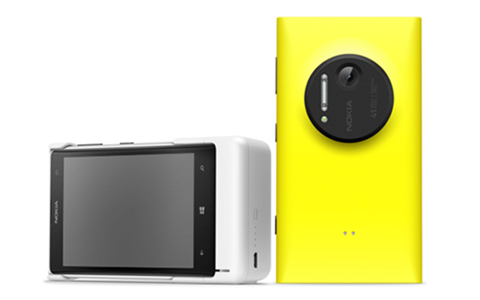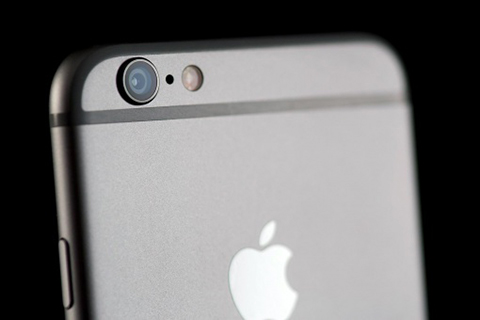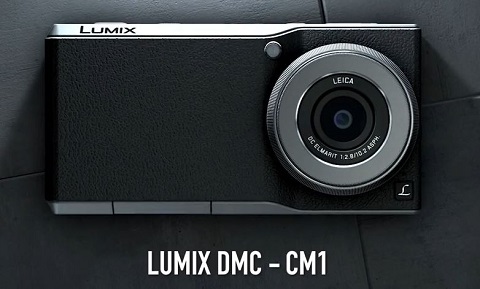Point-and-shoot cameras used to be the king when it comes to every day casual shooting. Almost every household had a point-and-shoot on standby, ready to capture moments. But with the improvement in camera technology for mobile devices, smartphones have aggresively taken its place as the go-to device for taking photos and videos. This leaves us asking, are point-and-shoot cameras dead?

Before we discuss further, let’s try to define a point-and-shoot camera. A P&S, according to WikiPedia, is also called a compact camera which is designed primarily for simple operations. It aims to simplify photography for users who don’t want to worry about the technical details such as ISO, Shutter Speed, and Aperture. As its classification suggests, all the user needs to do is turn on the camera, point, and shoot.

P&S cameras were compared in stark contrast to DSLR and mirrorless cameras. While DSLR cameras are powerful machines capable of superior image quality, they were also bulky, heavy, complex, and expensive. That’s why a lot of people, even DSLR owners, opt to purchase a P&S mostly due to its compact size, lighter weight, and affordability. So we’re talking about different machines here catering to different markets of which they are free to thrive. But why is there a huge decline in the compact camera segment that we’re now discussing its death. There are lots of factors to consider but one of the biggest culprit is the rise of camera phones.

Let’s go back to the advantages of the compact camera: portable, easy to use, and affordable. Now if you look at camera phones they also share those advantages. Even better. Although a good camera phone is often more expensive than a compact, it’s cheaper than a DSLR. In terms of image quality, the P&S is still superior than most camera phones out there but let’s not forget that a camera phone is also a communication device that can harness the power of the Internet.

Considering the popularity of photo-friendly social networking sites and apps like Facebook and Instagram, most users would rather settle for a lower-than-P&S image quality that can be quickly uploaded and shared on the Internet than have higher quality images that are stuck in an SD card. I’m sure you will agree that the demand for Internet connectivity is bigger than the demand for high-quality shooters.
Going back to the decline, reports will tell you that the digital camera market significantly suffered in 2012 and 2013. If you look at CIPA’s (Camera & Imaging Products Association) report below, total shipments of digital still cameras peaked in March 2012 with almost 11 million units shipped worldwide then started to decline and ended the year with just almost 5 million units.
Now let’s look at our primary culprit for this decline as mentioned earlier which is the camera phone. If you remember, it was also the same year when Nokia launched the 808 PureView smartphone with a large 1/1.2-inch 41 megapixel sensor. It was then followed by the Nokia Lumia 1020 in 2013 with a smaller but still large 1/1.5-inch 41 megapixel sensor. And we’re just talking about Nokia here. We still have the likes of Apple who are also keen about their imaging technology that they started with the iPhone 4 in 2010. Just look at where they are now with the iPhone 6.

The megapixel battle continued and expanded to sensors. In 2012, Samsung released the Galaxy Camera which has a 16.3 megapixel camera with a form factor and zoom capabilities of a P&S in addition to Internet connectivity and Android app compatibility.

And then they released the Galaxy S4 Zoom and a year later, the Galaxy K Zoom. Other companies we’re clamoring as well. In 2013, Sony released the Xperia Z1 with 1/2.3-inch 20.7 megapixel sensor. HTC responded with the HTC One M7 and its UltraPixel sensor.

I can go on and on when it comes to the improvement of the imaging technology of smartphones but the point is clear – smartphones are no longer just communication devices. They have become powerful imaging devices augmented with great apps, stealing the spotlight from poor obsolete digital cameras.

As for camera manufacturers, they responded by putting connectivity features like WiFi and NFC in their P&S to give consumers a reason to still use real cameras in tandem with smartphones. The struggle to keep its relevance in a market dominated by camera phones gave birth to a new breed of cameras like Sony’s QX smart lenses and the recently-announced Olympus Air.

Some camera companies were able to stay relevant by producing high-end P&S cameras with large 1-inch sensors like Sony’s RX100 Series. But big sensors are no longer exclusive to P&S cameras. Just last year Panasonic unveiled the Lumix DMC-CM1 Android smartphone with a 1-inch 20 megapixel sensor and a Leica lens.

So are point-and-shoot cameras dead? If we’re talking about the mediocre P&S that you used to know, the answer is yes. But I still have hopes for high-end P&S cameras. However, given the rate at how fast camera phones are improving it’s not hard to imagine that they might soon suffer the same fate.
Sources: CIPA, MarketWatch, LensVid

YugaTech.com is the largest and longest-running technology site in the Philippines. Originally established in October 2002, the site was transformed into a full-fledged technology platform in 2005.
How to transfer, withdraw money from PayPal to GCash
Prices of Starlink satellite in the Philippines
Install Google GBox to Huawei smartphones
Pag-IBIG MP2 online application
How to check PhilHealth contributions online
How to find your SIM card serial number
Globe, PLDT, Converge, Sky: Unli fiber internet plans compared
10 biggest games in the Google Play Store
LTO periodic medical exam for 10-year licenses
Netflix codes to unlock hidden TV shows, movies
Apple, Asus, Cherry Mobile, Huawei, LG, Nokia, Oppo, Samsung, Sony, Vivo, Xiaomi, Lenovo, Infinix Mobile, Pocophone, Honor, iPhone, OnePlus, Tecno, Realme, HTC, Gionee, Kata, IQ00, Redmi, Razer, CloudFone, Motorola, Panasonic, TCL, Wiko
Best Android smartphones between PHP 20,000 - 25,000
Smartphones under PHP 10,000 in the Philippines
Smartphones under PHP 12K Philippines
Best smartphones for kids under PHP 7,000
Smartphones under PHP 15,000 in the Philippines
Best Android smartphones between PHP 15,000 - 20,000
Smartphones under PHP 20,000 in the Philippines
Most affordable 5G phones in the Philippines under PHP 20K
5G smartphones in the Philippines under PHP 16K
Smartphone pricelist Philippines 2024
Smartphone pricelist Philippines 2023
Smartphone pricelist Philippines 2022
Smartphone pricelist Philippines 2021
Smartphone pricelist Philippines 2020
Miss Call says:
It’s not just about the sensor, but the optics. The moment smartphones, which aims to be as thin as possible, makes use of a really good lens, which will make the whole package bulky, then yes. But that’s not gonna happen. Some of those who own a Lumia 1020 for example, might also own a mirrorless P&S with really good lens, sharpness, practical focal length for optical zooming, and focus speed.
mapads2k3 says:
Short answer: NO
Source: I have a Note 4 and RX100 (1st gen). The difference in image quality is still miles in between.
Enya says:
Oh well i still cant leave home w/o my S95. Not one camera phone ever impresses me as much. Although never tried the Nokia 808 Pureview.
Tony says:
For now not yet. The quality of image of p&s is still superior. Not complicated to use, single purpose and dont lags. Pero malaking threat talaga ang smartphone sa p&s, pplaystation, most especially sa desktop/ laptop industry. Reports say that tablet is also declining.
barefootdaves says:
high-end or no high-end. the p&s era is dead.
Jon says:
Pretty much dead. Not taking away anything from point and shoot cameras, but portability is key here. The cellphone is almost with us everyday, and when a situation arises where one has to take a picture, the camera phone / smartphone is always there.
Everywhere, you almost see camera phones exclusively being used by “non-pros” in parties, weddings, etc.
As for me, it is also one less device to charge. ;)
Basta says:
Di lang naman smartphones ang kalaban ng P&S, pati na rin SLRs, not becuase of the functionality but because of what’s in and trending nowadays.
If someone just invented a killer P&S camera na kayang talunin ang mga SLRs AND SMARTPHONES, I would still doubt na papansinin to ng nakararami, in my opinion.
However, we can predict na mukhang P&S na ang mga DSLRs in the future. lol
don nutella says:
deds na agad? ni hindi pa nga ako nakakabili ng lampas 5MP na P&S. pati phone ko dati (RIP), 5MP lang max na meron. mahirap pag bitin budget.
ano bang phone maganda cam na hanggang 8k max presyo?